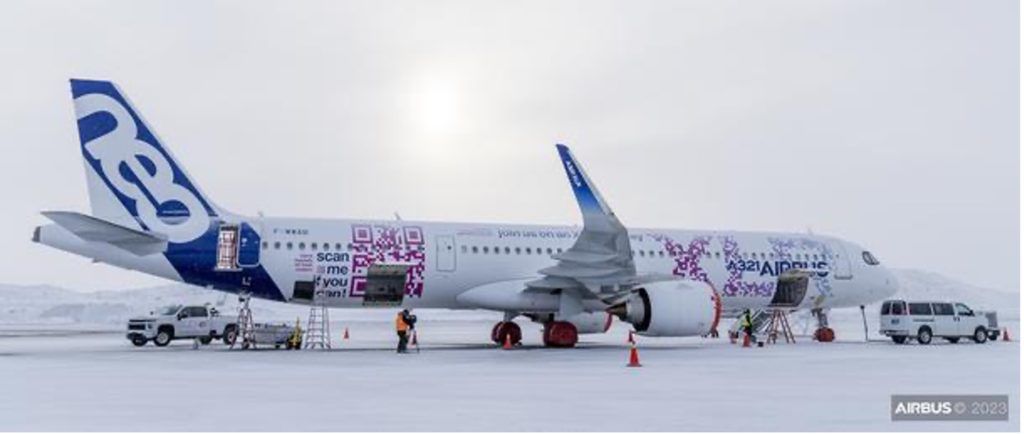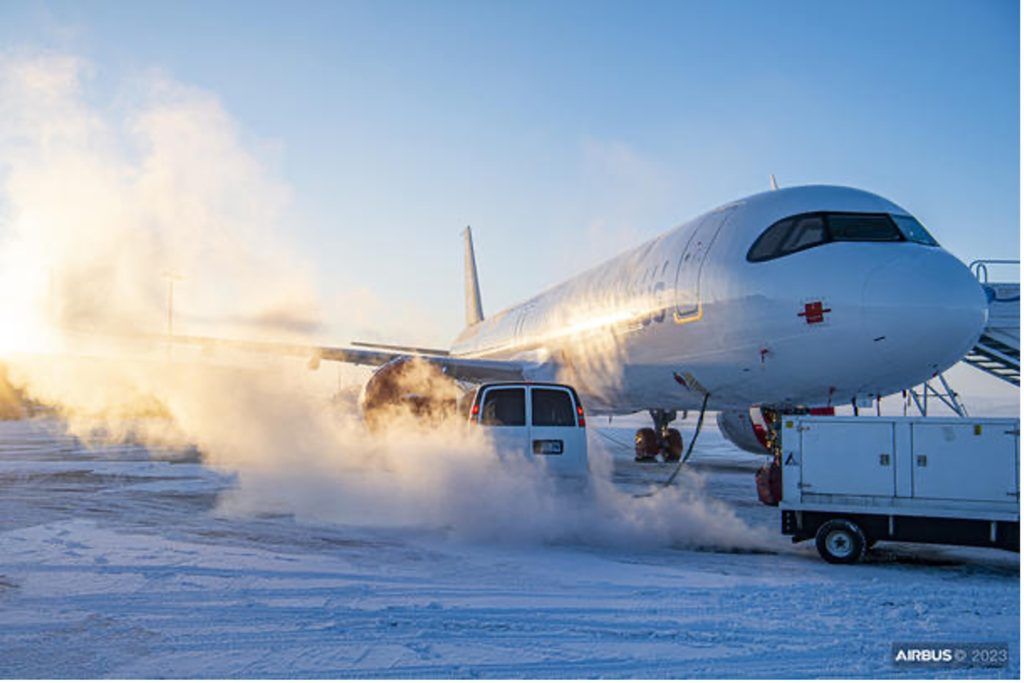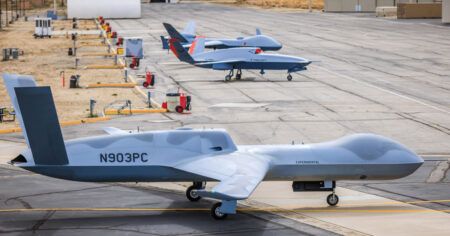The third A321XLR flight-test aircraft has completed cold-weather ground testing at Iqaluit in northern Canada.
During the four-day cold-weather ground testing the cabin of FT3 (MSN11080) was subjected to temperatures of -20˚C (-4˚F) to check the performance of key systems
“The objective of this most recent cold weather campaign was to validate the aircraft operation in cold weather for ground operations,” said Tuan Do, flight test engineer at Airbus.
“This time around we tested the cabin water and waste system – which required the temperatures inside the unheated cabin to soak at below -15˚C overnight. To this end, several cold soaks were conducted over successive nights with the doors left open, while the outside temperature was around -20˚C.
“In each case, different heating and insulation configurations were applied for subsequent comparative analysis by the engineering department.”
A cold weather option that is available for the A321XLR was tested in real conditions for the first time. The option adds heaters to ensure that systems do not freeze overnight. The tests also validated the standard aircraft configuration – without the optional package activated – and a weight-saving opportunity configuration, with less insulation.
Hydraulics, oil and electrical systems testing
A321XLR test aircraft FT2 (MSN11058) completed a similar program last month to test the operation of the hydraulics and other systems at extremely cold temperatures – after an overnight soak at -40˚C (-40˚F).
Do said, “During our first five-day visit to Iqaluit a month ago, when we powered-up the aircraft in the morning, we would wake up the hydraulics, electrics, and other systems and see how long it took to operate the aircraft and get it ready for taxiing and takeoff.”
“There were also some flights to validate the landing gear operation in very cold temperatures. Notably, the A321XLR features an uprated landing gear – to support the higher maximum take-off weight of the aircraft. Consequently, the shock absorbers on this new variant are designed to handle higher loads compared with those on the other A320 Family members.”

The test objective was to check the weight-on-wheels signal, so the aircraft knows when the main landing gear shock absorbers are compressed or extended.
“There are many systems on the aircraft which depend on the weight on wheels signals to tell them whether the aircraft is in flight or on the ground. So during our first visit to Iqaluit we verified how the weight-on-wheels function is affected by the physical changes in the main landing gear and how shock absorber stiffness is affected by cold temperatures,” said Do.
Another design feature of the -XLR related to hydraulics that needed to be evaluated in the cold environment were new hydraulic lines that pass through the Rear Centre Tank, located aft of the Landing Gear bay. “Our design office colleagues wanted us to check that the routing of the pipes did not significantly affect the hydraulic temperatures and operations after the warm-up of the aircraft,” said Tuan.
Other cold weather challenges, applicable for any aircraft, include ensuring that hatches don’t freeze shut, or that the systems in general do not freeze up – not only the water pipes, oil and hydraulics systems, but also the electrical system, especially batteries.
“Batteries don’t hold as much charge or provide as much power output at low temperatures. Meanwhile, oil and hydraulics become very viscous at very low temperatures which makes it hard to move flight control surfaces around and drive pumps. So you need to heat the aircraft up and its pipework to be able to operate the aircraft,” explained Tuan.
Human challenges
On-site at Iqaluit Airbus brought a team of more than 30 people. These included: six flight crew – pilots, flight test engineers, and a test-flight engineer; a cabin specialist engineer; a maintenance team – comprising mechanical specialists, electrical specialists, quality inspectors; instrumentation specialists; systems design specialists; technical photographers; as well as an operations colleague to oversee the logistics for the overall journey.
Flight test engineers agree the test requirements with the design engineers’ office several months in advance of the test campaign. From the requirements, the campaign mission is planned together with the mission flight-crew and test-flight engineer colleagues.
Together they determine how they need to configure the aircraft inside and out when to start taxiing and then take off, and what the ambient and systems temperature conditions should be. They also sequence all the of testing and plan the campaign, and ensure that the whole mission is conducted safely.





